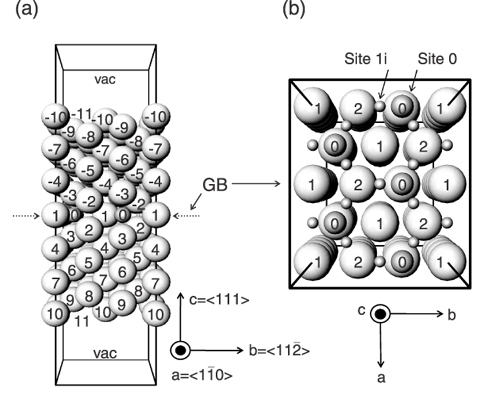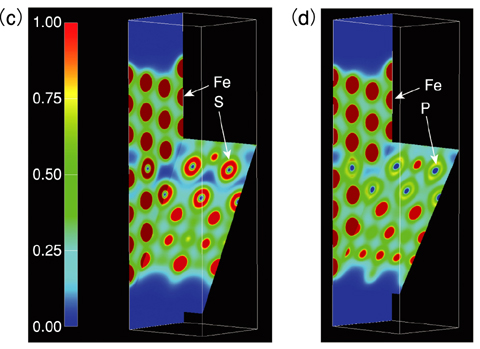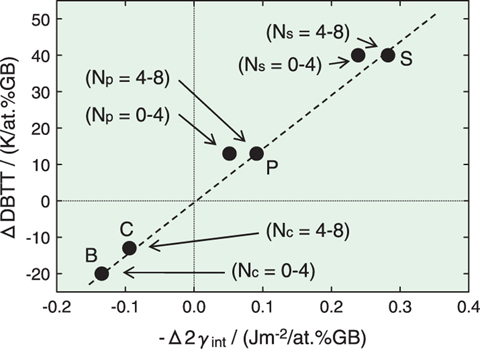
Fig.12-2 Unit cell including grain boundary (GB)

Fig.12-3 Electron distribution map at the grain boundary when sulfur (S) or phosphorus (P) atoms are segregated

Fig.12-4
Metallic materials are usually polycrystalline, consisting of crystal grains the size of which is about several ten micrometers. The boundaries between the grains are called "grain boundaries". The impurity or alloying atoms which are included in metals can move and be trapped at grain boundaries when the temperature of metals is high. This trapping is called "grain boundary segregation". Grain boundary segregation is known to bring about a large change in the mechanical properties of metals. A famous example is tempering embrittlement of low alloy steels, which is caused by phosphorous segregation. It is well known that sulfur has a much stronger embrittlement effect than phosphorous, and that boron and carbon have a strengthening effect on the grain boundary.
It is already known that grain boundary segregation occurs only in the first few atom layers, as verified by Auger electron spectroscopy. Thus, grain boundary embrittlement is considered to be caused by the change in the cohesion of metal atoms at the grain boundary caused by the segregated atoms. However, why and how the cohesion of metal atoms is changed has been a mystery for many years.
We performed first-principle calculations to simulate this phenomenon on the supercomputer in JAEA. First-principle calculation investigates the properties of materials by solving the relevant Schro..inger equations numerically on computer. We made great efforts to reduce the computational time, because this calculation is very time-consuming, and so were able to perform calculations simulating the grain boundary segregation (Figs.12-2 and 12-3).
From our calculations, we found that the cohesive energy of the grain boundary is reduced by the phosphorous and sulfur segregation, and that the energy is increased by the boron and carbon segregation. These results are consistent with the experimental results. Moreover, we found an excellent correlation between the calculated cohesive energy and the experimental ductile-to-brittle transition temperature (Fig.12-4). This demonstrated that the cohesion of the atoms at grain boundaries can be understood from first-principle calculations.
<Previous: 12 Computational Science and E-Systems Research | Next: 12-2 >